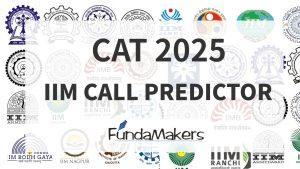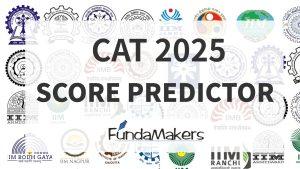Preparing passages based on psychology is crucial for CAT (Common Admission Test) preparation because it enhances critical reading and comprehension skills, essential for the exam’s verbal ability section. Psychology passages often involve complex theories, detailed studies, and nuanced arguments, challenging students to grasp intricate concepts and analyze diverse perspectives. This not only improves their ability to understand and interpret advanced texts but also sharpens their analytical thinking and inferential skills. Furthermore, familiarity with psychology topics broadens students’ knowledge base, making them more adaptable to the wide range of subjects they may encounter on the CAT, thereby boosting their overall performance.
Let’s have a look at the passages given below:
Passage 1.
Life is a self-correcting mechanism for error, both in its evolutionary history and in its existential reality. However, we often live under the illusion of perfection, believing that all the right answers are at the end of a straight path we must follow perfectly to reach an ultimate ideal. The truth is that we don’t know where life leads, what we truly want, or even who we are. It is through making mistakes repeatedly that we discover the path, and through stumbling that we learn to walk it. The answers come from within us, not before us.
Vincent van Gogh understood this when he realized how inspired mistakes drive us forward. Similarly, the poetic scientist Lewis Thomas (November 25, 1913–December 3, 1993) captured this idea in his essay “To Err Is Human,” from his 1979 collection The Medusa and the Snail, one of my favorite books.
Reflecting on the rapid advancements in artificial intelligence, Thomas notes the fulfillment of Samuel Butler’s Victorian prophecy about a new “mechanical kingdom” of life. Thomas writes that a good computer can think clearly and quickly, enough to beat you at chess, and some can even write obscure verse. They can do anything humans can do, and more.
Questions
- What is the main idea of the passage?
- A) Life follows a perfect, error-free path.
- B) Mistakes are crucial for personal and evolutionary growth.
- C) Artificial intelligence surpasses human capabilities.
- D) Vincent van Gogh and Lewis Thomas had similar artistic styles.
- According to the passage, how do we find our path in life?
- A) By following a strict, error-free plan.
- B) By seeking external validation.
- C) Through making mistakes and learning from them.
- D) By using artificial intelligence for guidance.
- Who is the author of the essay “To Err Is Human”?
- A) Vincent van Gogh
- B) Samuel Butler
- C) Lewis Thomas
- D) The passage’s author
- What does Lewis Thomas say about artificial intelligence in his essay?
- A) It can perform tasks better than humans.
- B) It will soon replace human jobs.
- C) It is not capable of creative tasks like writing poetry.
- D) It will lead to the downfall of human civilization.
Passage 2
Psychology has been influenced by Descartes and subsequent developments in physics, growing by adopting the hypothetico-deductive model. This model suggests that scientific progress occurs through the formulation of theories to explain phenomena. For instance, physicists use the Big Bang theory to describe the formation of the universe. A theory is essentially a collection of statements that explain a complex phenomenon through interconnected propositions. From a theory, scientists derive or suggest a hypothesis, which is a provisional explanation of how a particular phenomenon happens.
Questions
- What model has psychology adopted to facilitate its growth?
- A. Empirical-analytic model
- B. Hypothetico-deductive model
- C. Inductive-reasoning model
- D. Experimental-observational model
- Which influential figure and field contributed to the development of psychology’s growth model?
- A. Freud and Biology
- B. Newton and Chemistry
- C. Descartes and Physics
- D. Watson and Sociology
- What is an example of a theory mentioned in the passage that explains a complex phenomenon?
- A. Quantum Mechanics
- B. Evolutionary Theory
- C. Big Bang Theory
- D. Plate Tectonics
- What is the role of a hypothesis according to the hypothetico-deductive model?
- A. To confirm existing beliefs
- B. To provide a definitive explanation
- C. To offer a tentative explanation
- D. To reject a theory
Passage 3
As you walk home alone late at night, you hear the soft, crackling sound of something or someone stepping on dry leaves nearby. Your heart starts racing as you imagine who or what might be hiding in the shadows. Are you feeling fear or anxiety? The distinction between these emotions can be unclear. Even in psychological literature, the terms are often used interchangeably. Common fears such as fear of the unknown, fear of death, fear of contamination, fear of flying, catastrophic fear, fear of success, and fear of failure are actually experiences of anxiety. Phobias are also considered anxiety disorders (American Psychiatric Association, 2000), even though we associate phobias with specific fears like insects, enclosed spaces, heights, or contamination. However, it is important to distinguish between fear and anxiety, as much as possible. These emotions can lead to behaviors that avoid certain situations or defense mechanisms that hide the reality, and are thus understood as key factors in the dynamics of emotional illness (Ohman, 2010).
Questions:
- What triggers your heart to start racing as you walk home alone late at night?
- A. The thought of being alone
- B. The sound of someone or something stepping on dry leaves nearby
- C. Seeing a shadow
- D. The cold weather
- Correct option: B
- How are the terms fear and anxiety often used in psychological literature?
- A. As completely different concepts
- B. Interchangeably
- C. Only in the context of phobias
- D. Exclusively for diagnosing disorders
- Correct option: B
- According to the article, how are phobias classified?
- A. As a form of fear
- B. As an anxiety disorder
- C. As a type of defense mechanism
- D. As a reaction to stress
- Correct option: B
- Why is it important to distinguish between fear and anxiety?
- A. To avoid confusion in terminology
- B. To better understand emotional illnesses
- C. To improve communication
- D. To enhance treatment options
- Correct option: B
Test your Caliber with us!
FundaMakers provide a series of RCs, and previous year questions based on RCs on our site. Tap on ” CAT Question Bank” and visit our Question bank section perfectly tailored for CAT aspirants.
Visit the link below to strengthen your Reading Comprehension Ability for CAT VARC:



